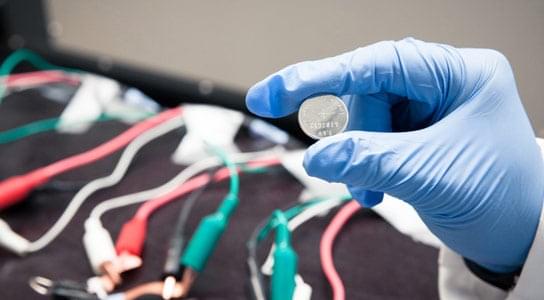ET isn’t the only one who gets to phone home.



Whether we’re staring at our phones, the page of a book, or the person across the table, the objects of our focus never stand in isolation; there are always other objects or people in our field of vision. How that visual “clutter” affects visual processing in the brain, however, is not well understood.
In a new study published Oct. 22 in the journal Neuron, Yale researchers show that this clutter alters how information flows in the brain, as does the precise location of that clutter within the wider field of vision. The findings help clarify the neural basis of perception and offer a deeper understanding of the visual cortex in the brain.

A big emphasis of the Journey Lens is to pull you away from your smartphone and allow you to control your day-to-day experience more from the glasses. That’s why this lightweight device has that small see-through display in the upper righthand corner, acting almost like an annotation on what you encounter rather than something in the middle of your field of view that’s trying to control what you see.
Phantom Technology offers a range of different monthly plans based on the experience the user wants with the Journey Lens glasses. These start with a free plan and go up to a premium pro plan at $18 a month, which includes early access to new features and something called Deep Focus.
As shown in the image above, there is a range of how many apps you can connect to the glasses for getting notifications, reading messages and so on—just three with the standard plan, or unlimited apps with the premium and premium pro plans. Three months of the premium plan is included for free with a pre-order of the $195 device, but I believe Phantom Technology would be better served to give everyone three free months of this plan so that new users can understand the value.

Researchers have set a new world record for wireless data transmission, achieving speeds of 938 gigabits per second – roughly 9,000 times faster than current 5G phone networks in the UK.
The breakthrough offers a glimpse at a new era of communications through next-generation 6G technology, which is expected to be deployed commercially within the next decade.
A team from University College London (UCL) achieved the breakthrough by combining both radio and optical technologies for the first time in order to overcome the bottleneck caused by frequency congestion.

Brookhaven National Laboratory researchers are working to develop ways to synchronize the magnetic spins in nanoscale devices to build tiny signal-generating or receiving antennas and other electronics.
Upton, New York — Scientists at the U.S. Department of Energy’s Brookhaven National Laboratory are seeking ways to synchronize the magnetic spins in nanoscale devices to build tiny yet more powerful signal-generating or receiving antennas and other electronics. Their latest work, published in Nature Communications, shows that stacked nanoscale magnetic vortices separated by an extremely thin layer of copper can be driven to operate in unison, potentially producing a powerful signal that could be put to work in a new generation of cell phones, computers, and other applications.
The aim of this “spintronic” technology revolution is to harness the power of an electron’s “spin,” the property responsible for magnetism, rather than its negative charge.

Using self-healing silicon microparticles, scientists have developed the first battery electrode that heals itself.
Researchers have made the first battery electrode that heals itself, opening a new and potentially commercially viable path for making the next generation of lithium-ion batteries for electric cars, cell phones, and other devices.
The secret is a stretchy polymer that coats the electrode, binds it together, and spontaneously heals tiny cracks that develop during battery operation, said the team from Stanford University and the Department of Energy’s SLAC National Accelerator Laboratory.

A new study from researchers at Tyndall National Institute and the National University of Singapore shows that subtle changes in the intermolecular van der Waals interactions in the active component of a molecular diode can improve the device performance by more than a factor of ten.
A team of scientists from Tyndall National Institute at University College Cork and the National University of Singapore have designed and fabricated ultra-small devices for energy-efficient electronics. By finding out how molecules behave in these devices, a ten-fold increase in switching efficiency was obtained by changing just one carbon atom. These devices could provide new ways to combat overheating in mobile phones and laptops, and could also aid in electrical stimulation of tissue repair for wound healing. The breakthrough creation of molecular devices with highly controllable electrical properties will appear in the February issue of Nature Nanotechnology. Dr. Damien Thompson at the Tyndall National Institute, UCC and a team of researchers at the National University of Singapore led by Prof. Chris Nijhuis designed and created the devices, which are based on molecules acting as electrical valves, or diode rectifiers.
Dr. Thompson explains “These molecules are very useful because they allow current to flow through them when switched ON and block current flow when switched OFF. The results of the study show that simply adding one extra carbon is sufficient to improve the device performance by more than a factor of ten. We are following up lots of new ideas based on these results, and we hope ultimately to create a range of new components for electronic devices.” Dr. Thompson’s atom-level computer simulations showed how molecules with an odd number of carbon atoms stand straighter than molecules with an even number of carbon atoms. This allows them to pack together more closely. Tightly-packed assemblies of these molecules were formed on metal electrode surfaces by the Nijhuis group in Singapore and were found to be remarkably free of defects. These high quality devices can suppress leakage currents and so operate efficiently and reliably.

Angstrom-scale ICs will require innovation across the entire semiconductor ecosystem: This will include advances in both the hardware (transistors, power distribution, and connection of multi-die systems) and tools (EDA tools with AI/ML and silicon life-cycle management).
Article co-authored by Deepak Sherlekar, Fellow in the Solutions Group at Synopsys
Every time you stream a 4K movie from your phone or play an online video game, you require bandwidth—high rates of data transfer that enable your connected devices to deliver engaging, interactive, and immersive experiences (Figure 1). Our digital world—with its increasing levels of intelligence—continues to demand more from the underlying technologies that make all these activities possible. But there are bottlenecks that threaten to thwart real-time responses.
Riding along in the Tesla Robotaxi at the unveiling event. Shot on Phone 16 ProFull video coming soon.

The US Department of Justice (DoJ) has submitted a new “Proposed Remedy Framework” to correct Google’s violation of antitrust antitrust laws in the country (h/t Mishaal Rahman). This framework seeks to remedy the harm caused by Google’s search distribution and revenue sharing, generation and display for search results, advertising scale and monetization, and accumulation and use of data.
The most drastic of the proposed solutions includes preventing Google from using its products, such as Chrome, Play, and Android, to advantage Google Search and related products. Other solutions include allowing websites to opt-out of training or appearing in Google-owned AI products, such as in AI Overviews in Google Search.
Google responded to this by asserting that “DOJ’s radical and sweeping proposals risk hurting consumers, businesses, and developers.” While the company intends to respond in detail to DoJ’s final proposals, it says that the DoJ is “already signaling requests that go far beyond the specific legal issues in this case.”